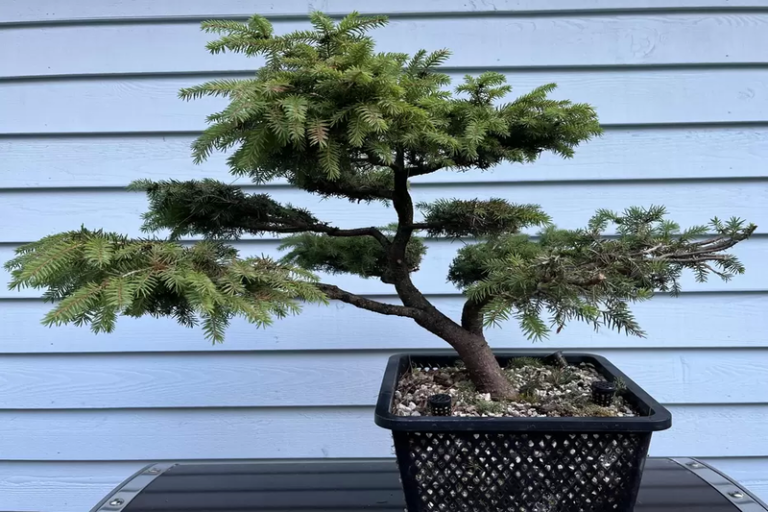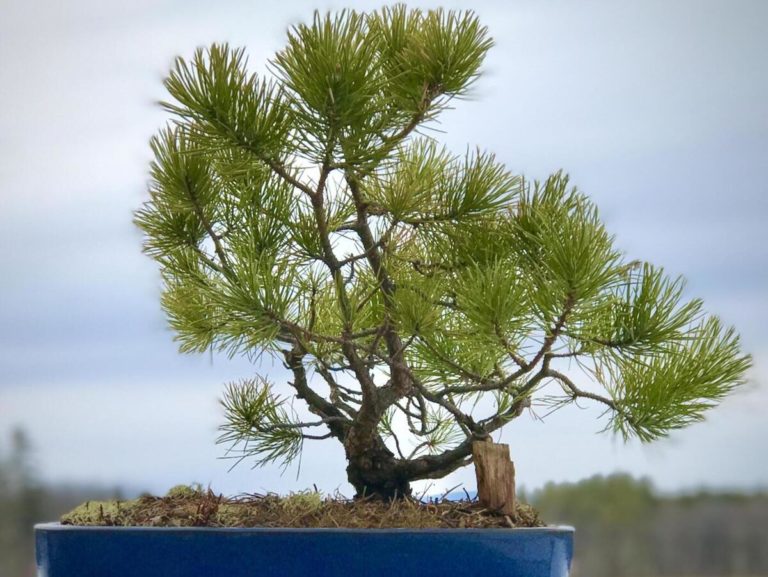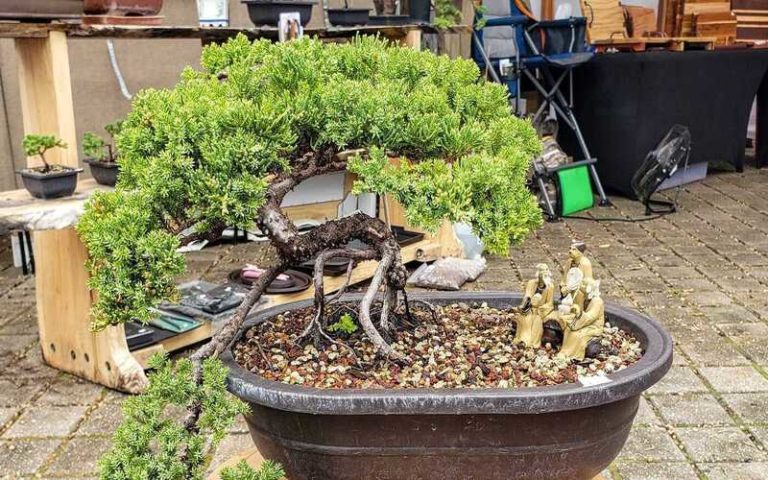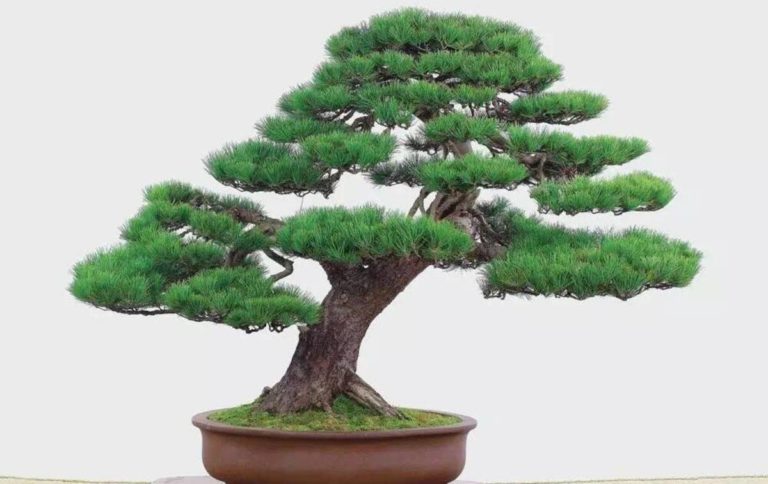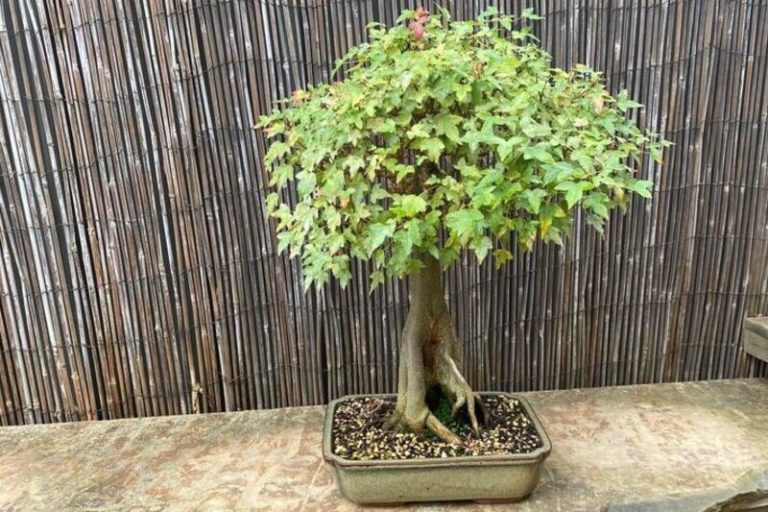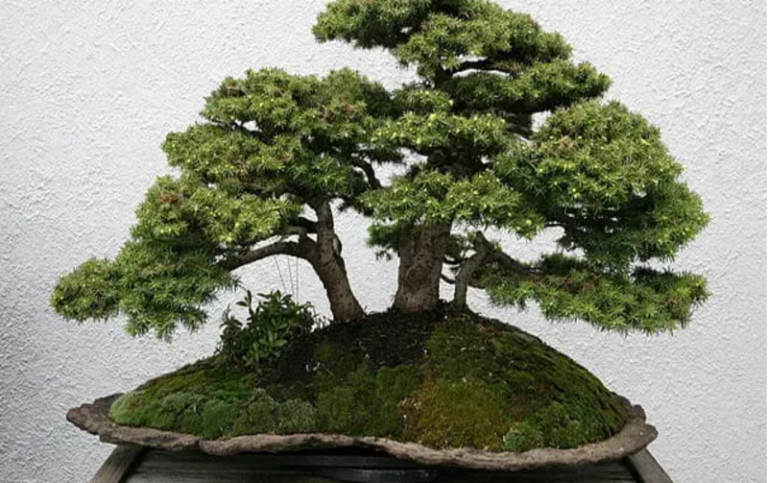Yamadori Bonsai: The Timeless Art of Creating Living Sculptures
The small scale and delicate beauty of bonsai trees are well-known, but have you ever heard of Yamadori bonsai? Instead of being developed from seed or cuttings, these trees are collected from their natural environment, making them distinctive. This article describes Yamadori bonsai, how to collect and care for them, and the advantages of cultivating these beautiful trees.
What is Yamadori Bonsai?
Yamadori bonsai refers to trees that are collected from their natural environment and cultivated as bonsai trees. These trees are usually older and have been growing in their natural environment for many years, which means they have unique features such as twisted trunks, interesting bark patterns, and unique root structures that make them perfect for bonsai.
Yamadori bonsai can be collected from forests, mountains, and other natural areas, and once collected, they require specific care to thrive as bonsai trees. Yamadori bonsai is a unique and beautiful way to grow bonsai trees and is a popular practice among bonsai enthusiasts.
History and Origins of Yamadori Bonsai
The origins of Yamadori bonsai can be traced back to ancient China and Japan, where it was common practice to harvest trees from their natural environment and cultivate them as bonsai. During the Edo period (1603–1868), when bonsai culture flourished and the art of cultivating miniature trees reached new heights, Yamadori bonsai became popular in Japan.
Yamadori bonsai, also known as’mountain bonsai,’ were highly regarded for their unique characteristics and the difficulty they presented to bonsai enthusiasts. Collecting trees from the forest necessitated the use of specialized skills and knowledge to prevent damage to the trees. After being gathered, the tree had to be painstakingly nurtured back to health and fashioned into a miniature masterpiece.
During the Meiji period (1868–1922), yamadori bonsai fell out of favor as people became more interested in creating bonsai from seedlings or cuttings. However, in the mid-20th century, yamadori bonsai regained popularity as bonsai enthusiasts sought out unique and interesting trees to cultivate.
Today, yamadori bonsai is a popular practice among bonsai devotees around the globe, and many specialized nurseries and collectors offer trees collected from natural environments. While the practice of collecting trees from the forest is controversial due to conservation and environmental impact concerns, many collectors adhere to ethical and sustainable harvesting methods to ensure that the trees are not injured and the environment is preserved for future generations.
Types of Yamadori Bonsai
Each species of Yamadori bonsai has its own special qualities that make it desirable for a home bonsai garden. Some of the most common varieties of Yamadori bonsai are as follows:
- Pine: Pine trees are frequently used for Yamadori bonsai due to its resilience, ease of maintenance, and distinctive, rough look, all of which are highly valued in the art form. Most Yamadori bonsai are made from one of many pine species, including Japanese black pine, Scots pine, and white pine.
- Juniper: Junipers are another popular choice for Yamadori bonsai because of their twisted, gnarled trunks and their delicate, needle-like foliage. Shimpaku juniper, Rocky Mountain juniper, and Sierra juniper are all highly sought after for their unique features.
- Oak: Oak trees are highly valued for their massive, solid trunks and rich, green foliage. Because of the tree’s large root system, collecting oak Yamadori can be difficult, but the outcome is a one-of-a-kind and magnificent bonsai specimen.
- Maple: Maples are known for their striking fall foliage and their delicate, lacy leaves. Yamadori maple bonsai can be challenging to cultivate, but the result is a stunning specimen that is highly prized by bonsai enthusiasts.
- Spruce: Spruce trees are highly valued for their distinctive shape and their delicate, needle-like foliage. The Colorado blue spruce, Sitka spruce, and Norway spruce are among the most commonly collected spruce species for Yamadori bonsai.
These are only a handful of the numerous varieties of yamadori bonsai accessible to collectors. Yamadori bonsai gardening is an interesting and fulfilling pastime since each species has its own distinct traits and problems.
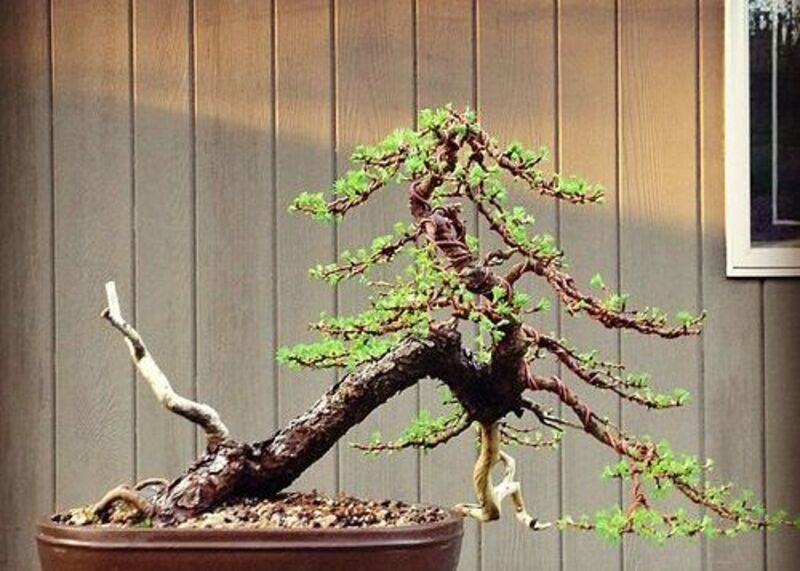
Yamadori Bonsai and its Symbolism
Yamadori bonsai is not merely a stunning piece of art; it also has significant symbolic importance. In Japanese tradition, bonsai trees are frequently employed in traditional rituals to signify longevity, wealth, and serenity since they are seen to be a depiction of the harmony between people and nature.
Yamadori bonsai extends this symbolism by expressing the relationship between people and the natural world. When a tree is taken from its native habitat and grown as a bonsai, it becomes a symbol of nature’s persistence and adaptability. The tree’s tough bark, twisted trunk, and distinctive root system convey the tale of the hardships it experienced in its original habitat, and the care and attention it gets as a bonsai represents the human desire to connect with and care for the natural world.
Yamadori bonsai is also a symbol of life’s impermanence. Bonsai trees are living organisms that require regular care and attention as they grow and develop. The cultivation of a yamadori bonsai necessitates patience, perseverance, and a willingness to accept the natural cycles of life and development.
Besides its cultural and symbolic significance, Yamadori bonsai is an internationally popular leisure and art form. These distinctive and gorgeous trees are prized by collectors and enthusiasts for their beauty, resilience, and ability to tell a story about the natural world. Whether you are an experienced bonsai enthusiast or a beginner, Yamadori bonsai is a fascinating and rewarding hobby that will bring you years of pleasure and fulfillment.
Characteristics of Yamadori Bonsai
Bonsai enthusiasts highly value Yamadori bonsai because of their distinctive qualities that set them apart from other varieties of bonsai. Here are some of the key characteristics of yamadori bonsai:
Natural beauty: Yamadori bonsai are collected from their natural environment, which means they have a unique, rugged beauty that can’t be replicated by other types of bonsai. The trees may have gnarled trunks, interesting root structures, and other features that make them stand out.
Age: Yamadori bonsai can be significantly older than other varieties of bonsai because they are collected in the forest. Some Yamadori bonsai may be hundreds of years old, giving them a sense of history and gravitas that younger bonsai cannot match.
Resilience: Yamadori bonsai are obtained from severe natural areas, thus they are frequently quite hardy and can tolerate a broad range of growth circumstances. This makes them less fragile and require more specialized care than other varieties of bonsai.
Storytelling: Yamadori bonsai are often quite tough and can tolerate a variety of growth circumstances because they are harvested from severe natural areas. They are thus simpler to maintain than other bonsai varieties, which might be more sensitive and call for more expert care.
Challenge: Collecting and cultivating Yamadori bonsai can be a challenging and rewarding experience. The process requires a lot of knowledge, skill, and patience and can be very satisfying for bonsai enthusiasts who enjoy a challenge.
Overall, Yamadori bonsai are prized for their natural beauty, resilience, and unique characteristics. If you are a bonsai enthusiast looking for a challenge and a one-of-a-kind addition to your collection, a Yamadori bonsai may be just what you’re looking for.
How to Collect Yamadori Bonsai
Collecting yamadori bonsai is a delicate process that requires a lot of knowledge, skill, and patience. Here are some basic steps to follow if you want to collect your own yamadori bonsai:
- Research: Before you start collecting, it’s important to do your research. Learn about the types of trees that grow in your area as well as the legal and ethical considerations involved in collecting yamadori bonsai. It’s also a good idea to read up on the specific techniques involved in collecting and cultivating yamadori bonsai.
- Scout locations: Once you have a good understanding of the types of trees you’re looking for, start scouting locations where those trees might grow. Look for areas with rocky soil, high altitude, and other conditions that might make the trees more resilient.
- Obtain permission: Make sure you have the proper permits and permissions if you’re collecting on public land. If you’re collecting on private property, make sure you have the consent of the proprietor.
- Choose a tree: When you find a suitable location, look for a tree that has interesting features and good potential for bonsai cultivation. Look for trees with interesting trunks, unique root structures, and other distinctive features.
- Collect the tree: The procedure for gathering the tree will vary depending on the tree and its location. In general, you’ll need to gently dig up the tree while preserving as much of the root system as feasible. To remove the tree out of the ground without hurting it, you may need to utilize specific tools and procedures.
- Transport and care: Once you’ve collected the tree, transport it carefully to its new home. Make sure the tree has enough water and is protected from wind and other environmental factors. Take care to prune the tree carefully and allow it to recover from the stress of being transplanted.
Collecting yamadori bonsai can be a challenging and rewarding process. If you’re interested in cultivating your own yamadori bonsai, make sure you do your research and follow best practices for ethical and sustainable collecting. With patience and care, you can create a beautiful and unique addition to your bonsai collection.
Benefits of Yamadori Bonsai
Yamadori bonsai offer a range of benefits to bonsai enthusiasts, both in terms of their unique aesthetic qualities and their practical advantages. Here are some of the key benefits of yamadori bonsai:
Unique beauty: Yamadori bonsai have a distinctive beauty that is unmatched by other types of bonsai. Bonsai enthusiasts highly value their natural, rugged features because they can create a sense of history and character.
Sense of connection to nature: Collecting and nurturing yamadori bonsai might help you feel more connected to nature. Working with a tree that was once part of the natural environment can help you develop a better understanding of the natural world and its cycles of growth and decay.
Resilience: Yamadori bonsai are often highly resilient, thanks to their natural adaptations to harsh environments. This resilience can make them easier to care for than other types of bonsai, which may be more delicate and require more specialized care.
Potential for unique styles: Yamadori bonsai offer a wide range of potential styles and designs. Their unique features, such as gnarled trunks and interesting root structures, can be incorporated into a variety of bonsai styles, from formal upright to cascading.
Historical significance: Some yamadori bonsai may be several hundred years old, which can give them a sense of historical significance and importance. Working with a tree that has such a long history can be a powerful experience.
Overall, Yamadori bonsai offer a unique and rewarding experience for bonsai enthusiasts. Whether you’re interested in their aesthetic beauty, practical advantages, or sense of historical significance, cultivating a yamadori bonsai can be a highly satisfying and fulfilling endeavor.
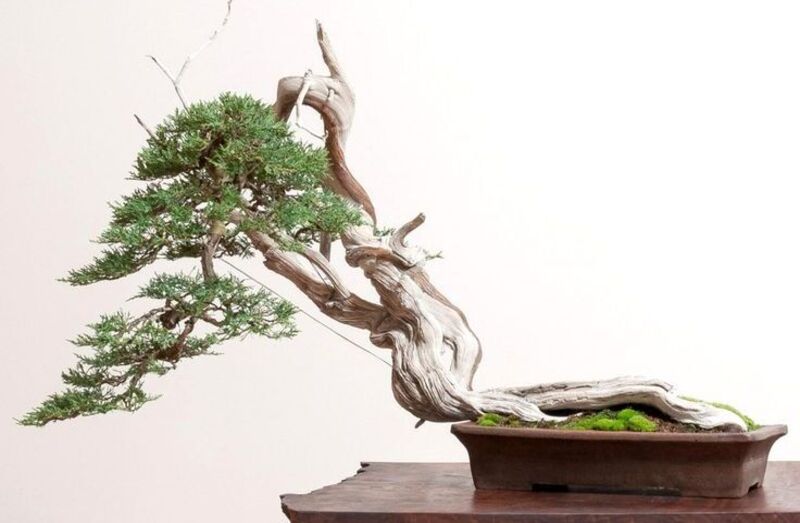
Styling and Design of Yamadori Bonsai
Styling and design are crucial aspects of creating a beautiful and unique yamadori bonsai. Here are some tips for styling and designing your Yamadori bonsai:
Consider the tree’s natural features: Yamadori bonsai often have unique and interesting natural features, such as gnarled trunks or twisted branches. When styling your Yamadori bonsai, consider how these natural features can be incorporated into the design to create a sense of character and history.
Choose a style: There are many different styles of bonsai, from formal upright to cascading. When styling your Yamadori bonsai, consider which style will best suit the tree’s natural features and overall aesthetic.
Prune carefully: Pruning is an important part of creating a well-designed Yamadori bonsai. Careful pruning can help shape the tree’s growth and create a balanced and aesthetically pleasing design.
Use wire to shape branches: Wiring is another important technique for shaping your yamadori bonsai. Use wire to gently shape the tree’s branches, being careful not to damage the bark or break the branches.
Consider the pot: The pot you choose for your Yamadori bonsai can have a significant impact on its overall design. Choose a pot that complements the tree’s natural features and the style you’ve chosen.
Be patient: Creating a beautiful yamadori bonsai takes time and patience. Don’t rush the styling and design process, and allow the tree to grow and develop at its own pace.
By carefully considering the tree’s natural features, choosing a suitable style, and using techniques such as pruning and wiring, you can create a beautiful and unique Yamadori bonsai that is a true reflection of your skills and artistic vision.
How to Care for and Maintain Yamadori Bonsai
Caring for and maintaining a yamadori bonsai is essential to ensuring its long-term health and beauty. Here are some tips for caring for and maintaining your Yamadori bonsai:
- Watering: Yamadori bonsai require regular watering to keep them healthy. Water the tree when the soil begins to feel dry, being careful not to overwater.
- Fertilizing: Fertilizing your yamadori bonsai can help provide it with the nutrients it needs to grow and thrive. Use bonsai-specific fertilizer, applied according to the instructions on the package.
- Repotting: Repotting your yamadori bonsai every few years can help ensure it has enough space to grow and develop. Repot in the spring, after the tree has come out of dormancy.
- Pruning: Regular pruning can help shape the tree’s growth and maintain its overall health. Prune during the tree’s active growing season, being careful not to remove too much growth at once.
- Wiring: Wiring is an important technique for shaping your yamadori bonsai. Be careful not to leave the wire on for too long, as it can cut into the bark and damage the tree.
- Protect from harsh weather: Yamadori bonsai are often adapted to harsh environments, but extreme weather conditions can still damage them. Protect your bonsai from high winds, frost, and other weather events that could harm the tree.
- Monitor for pests and diseases: Regularly inspect your yamadori bonsai for signs of pests or diseases, such as yellowing leaves, wilting, or spots on the leaves. Address any issues promptly to prevent further damage.
By following these tips and regularly caring for and maintaining your yamadori bonsai, you can help ensure it grows and thrives for many years to come.
Yamadori Bonsai care sheet
| Aspect | Care Tips |
| Watering | When the soil seems dry, water every 2-3 days in the growth season and every 7-10 days in the dormant season. Avoid soil and root damage by using a fine-spray watering can or hose. |
| Fertilizing | Apply bonsai fertilizer according package directions. Fertilize every 2–3 weeks throughout the growth season and discontinue during the dormant season. |
| Repotting | Repot with bonsai soil every 2-3 years. After dormancy, repot the tree in spring. To promote growth, trim roots gently. |
| Pruning | Avoid overpruning during the tree’s active growing season. Pruning helps the tree develop and stay healthy. |
| Wiring | Wire the tree’s branches lightly without damaging the bark or breaking them. Remove the wire before it cuts the bark. |
| Protect from harsh weather | Yamadori bonsai can survive hard circumstances, however excessive weather can harm them. Protect your bonsai against wind, frost, and other weather hazards. |
| Monitor for pests and diseases | Check your yamadori bonsai for pests and illnesses including yellowing leaves, wilting, and spots. Prevent damage by addressing issues immediately. Control pests and diseases as needed. |
By following these tips and regularly caring for and maintaining your yamadori bonsai, you can help ensure it grows and thrives for many years to come.
Conclusion
Yamadori bonsai is a distinct and elegant method of cultivating bonsai plants. It takes some expertise and ability to collect and care for these trees, but the final result is a gorgeous tree that may be enjoyed for years to come. If you enjoy bonsai, explore yamadori bonsai for a fresh and intriguing challenge.
FAQ:
Q: What does “yamadori” mean?
A: “Yamadori” is a Japanese word that translates as “mountain collected.” It refers to bonsai trees brought from their native habitat in the highlands.
Q: Is collecting Yamadori bonsai ethical?
A: Collecting Yamadori bonsai can be ethical if done responsibly and legally. It is important to only collect trees from areas where it is allowed, and to follow proper collection techniques to avoid damaging the surrounding ecosystem.
Q: How do I know if a tree is suitable for Yamadori bonsai?
A: Trees appropriate for yamadori bonsai have particular features, such as a well-developed root system, an unusual trunk form, and a high potential for future growth and development. Before collecting a tree, make sure it is suitable for bonsai.
Q: Can I create a yamadori bonsai from a tree in my yard?
A: While it is possible to create a bonsai from a tree in your yard, it would not be considered a yamadori bonsai. Yamadori bonsai are specifically collected from their natural habitat in the mountains.
Q: How long does it take for a yamadori bonsai to mature?
A: The length of time it takes for a Yamadori bonsai to grow is determined by several factors, including the type of tree, its age at the time of collecting, and the quality of care given to it. A Yamadori bonsai might take several years, if not decades, to properly mature and produce the ideal shape and form.
Q: Can I display my yamadori bonsai indoors?
A: While it is possible to display yamadori bonsai indoors, they typically prefer the natural sunlight and pure air of the outdoors. If you decide to exhibit your bonsai indoors, be sure to provide it with sufficient light and moisture.
Q: Do I need special tools to care for my yamadori bonsai?
A: While specialized bonsai tools can be helpful, they are not always necessary. Basic gardening tools, such as pruning shears and scissors, can be used for most bonsai care tasks.
Also Read:


